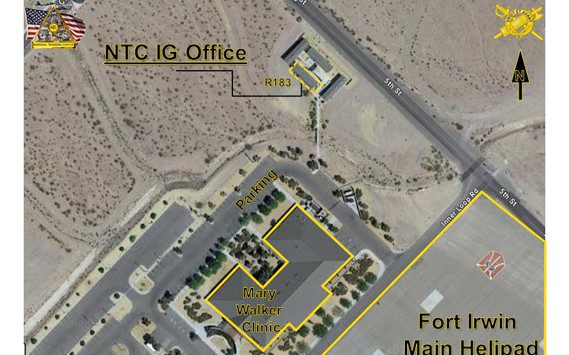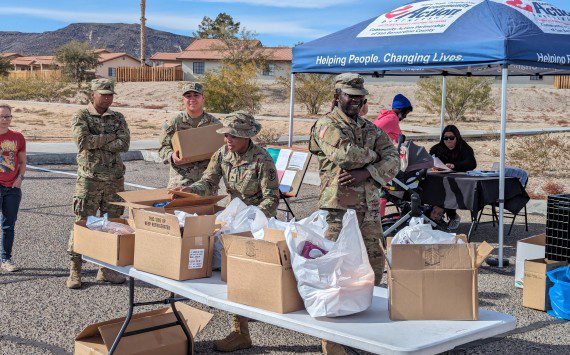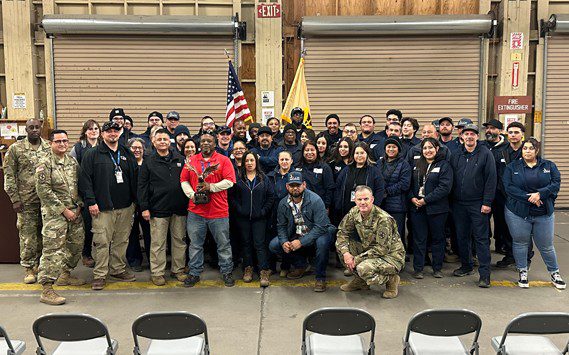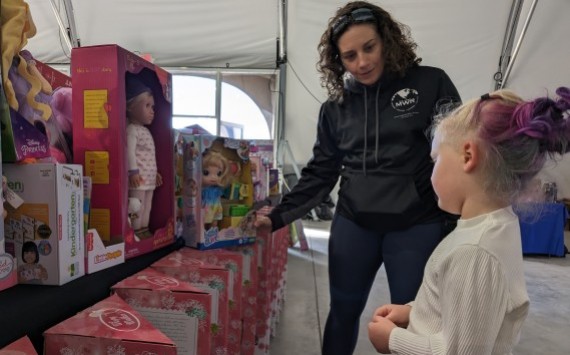FORT IRWIN, Calif. — As part of the Great California ShakeOut drill, emergency services personnel at Fort Irwin reminded the community to practice how to “Drop, Cover, and Hold On” in the event of a major earthquake. The drill took place on Oct. 19 at 10:19 a.m. and involved millions of participants around the world.
Fort Irwin has never experienced a major earthquake, but it is nonetheless important for the community to be prepared, said David Pitts, emergency management specialist at Fort Irwin’s Directorate of Emergency Services.
“Never say never, and prepare for the worst,” he said. “We’re still in California.”
The Great California ShakeOut is an annual event coordinated by the Earthquake Country Alliance, a statewide public-partnership that aims to improve earthquake preparedness, mitigation and resiliency. This year, more than 55 million people participated worldwide to learn how to protect themselves when an earthquake strikes, whether they are at home, at work, or traveling.
The drill emphasized the “Drop, Cover, and Hold On” method to survive. By dropping onto their hands and knees, individuals reduce the risk of falling or being knocked down and allow themselves the opportunity to crawl to shelter. The second step is to cover your head and neck with one arm and hand, and crawl underneath a form of cover, such as a sturdy table or desk. If there is no cover available, the method recommends crawling next to an interior wall away from windows, staying on your knees, and bending over to protect vital organs. Finally, the third step instructs individuals to hold onto their shelter in case it moves, or, if there is no shelter, to hold onto their head and neck with both arms and hands.
Preparing your home and your family before an earthquake hits is equally important, according to the ECA. The organization recommends moving bookcases and other heavy furniture away from beds and seating areas, and securing heavy objects that could fall and injure people during an earthquake. It also recommends identifying safe spaces and creating an emergency plan to make sure all members of the household know what to do and how to communicate when an earthquake strikes. Finally, it suggests organizing disaster supply kits and creating a “grab-and-go” bag with copies of important documents if an evacuation is necessary.
Earthquakes can cause extensive structural damage and injuries, as well as interrupt services like electricity and water. Fort Irwin’s emergency services have a plan to both respond to and recover from an earthquake, and last year held the first earthquake response and recovery exercise for U.S. Army Installation Management Command.
More information about earthquake preparation and survival techniques can be found at the Great California ShakeOut website https://www.shakeout.org/california/.











